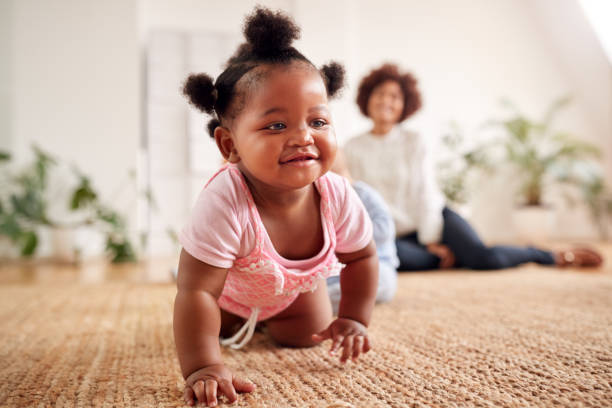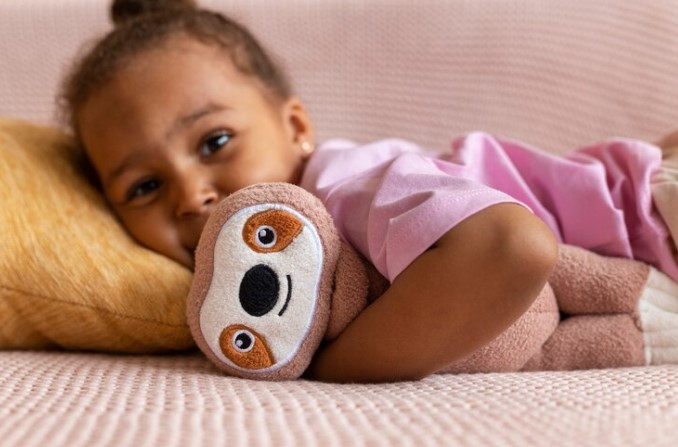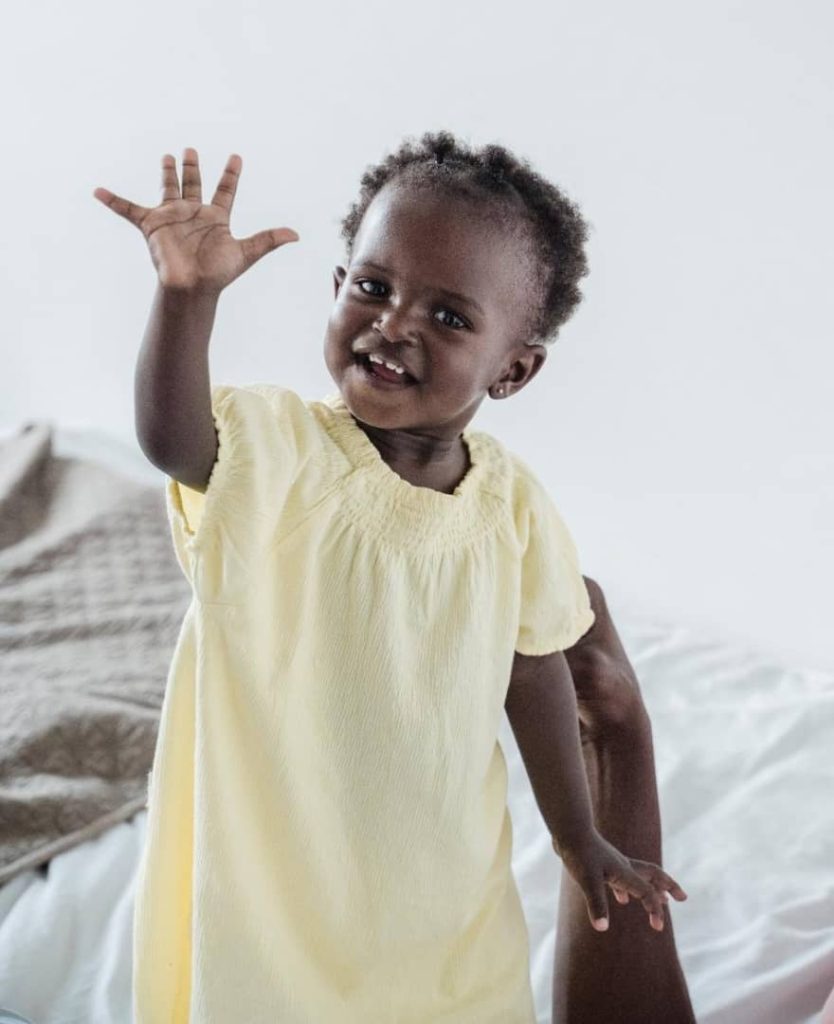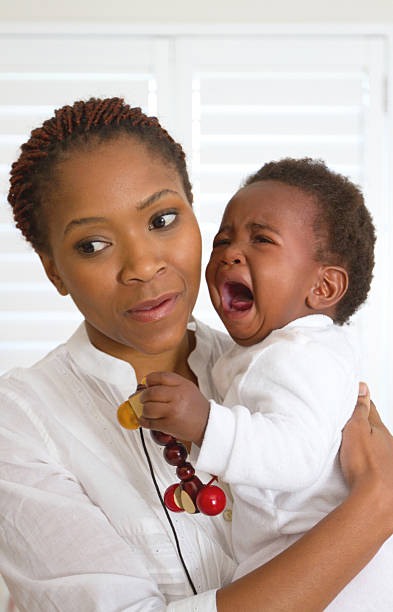The best way to deal with separation anxiety is to deal with it, not run away from it (like I did sometime ago-check here for context). You can work with your little one to help them get past this stage using some of the tips below:
Gradual Exposure
Practice leaving your child on their own in a safe space, you can start by leaving them in a room and going to another room for about 5 minutes and then return. While you’re away, you can sing or talk to them from the other room.
You can gradually increase the time of separation. This helps create a process of trust knowing that you’ll return to them whenever you leave.
Practice Independence

This is similar to the first. This process, however, is baby-led. If your little one can walk or crawl, allow them to wander into other rooms(that are baby-proof/safe) on their own while playing, you can monitor them from a safe distance without interfering.
This allows them to take the lead without the usual fear of being separated from you, establishing some form of independence gradually. Games like Peek- a- boo (hide and seek) are also helpful in helping your little one become independent.
Cuddle and Comfort the child regularly
When they are afraid, upset or hurt, spend time holding and comforting them. This will help fill their tank and foster a sense of secure attachment.
Gradual Introduction

This applies when you’re introducing a new caregiver or change of environment. The new caregiver shouldn’t be left alone with your kids immediately.
Let them spend some time while you’re still around just observing while you do the introduction. You could also hand the baby to them for a few minutes at intervals without leaving. Your little one will gradually warm up to them.
Spend time with the new
In a new environment like a creche or school, you could go with them a few days before the actual resumption date, to help them familiarize themselves with the environment. You could also spend some time together before you leave them in that space. The goal is to ease them into the new process without altering their balance.
Leave a transition item

Children have a hard time processing the fact that you’ll be back for them at a later time. Giving them a transition item helps them feel secure and provides a sense of normalcy.
You can give them an item that’s unique to you and makes them feel like you’re with them, like your handkerchief or a comfort item they are used to like a pacifier, small toy, teether or even a blanket.
Keeping your emotions in check
Whatever happens, please resist the temptation to let the waterworks out, don’t be like me..lol. I totally understand you’ve never had to leave them in the care of a secondary caregiver for so long and the very thought of doing so makes you feel anxious and guilty. However, keeping a happy face and a reassuring smile will help them feel better.
Develop and Stick with a routine goodbye process

This is the hard part but you have to be strong. It is important to note that whatever goodbye process you decide on must be brief, upbeat and should be the same every time (remember, routines are helpful for your little ones). It could be a hug, handshake, a song, chant, specific words, etc.
Ensure the goodbyes are positive and do not repeat the process more than once. When you say goodbye, mean it. Don’t run back because they start crying or repeat the process for good measure. Trust me, before you get to your car, they’ll probably be playing with a toy.
Discuss the events
You can talk to your little one about what’s happening and as they get older, they’ll begin to understand the explanation. If they can speak, feel free to engage them in a conversation about resumption to school or a new caregiver and also find out how they feel about it.
Make a promise and keep it
This one always works! So when dropping off your little one and separation anxiety kicks in, just calmly promise them a fun activity or favorite snack for later. For instance, you could say: “I’ll take you home when I come back” or “We’ll go to the mall to play and buy Pringles when I come back.” Whatever works for your baby, remember to keep your promise so your little one can always trust you.
Handling separation anxiety can be tough as it’s mostly a two-way street but understanding the causes and implementing gentle strategies can make this transition smoother. As your baby continues to grow and develop, this phase will gradually fade, leaving behind a foundation of secure attachments that will benefit them throughout their lives. Patience, consistency, and a whole lot of love will go a long way in navigating this tender journey of parenthood. You’ve got what it takes to help your little one get through this. I am rooting for you!
Wanna get more practical tips and learn from the experiences of other parents? Join Fusion’s Parenting Community.
Click the button below to download Fusion.






4,216 Responses
I encountered your site after doing a search for new contesting using Google, and decided to stick around and read more of your articles. Thanks for posting, I have your site bookmarked now.
Good site! I truly love how it is easy on my eyes it is. I am wondering how I might be notified when a new post has been made. I’ve subscribed to your RSS which may do the trick? Have a great day!
Soft Sky Picks – Easy-to-browse layout with soothing colors that feel welcoming.
Golden Meadow House Store – Loved the cozy vibe and the carefully selected products throughout.
Everline Craft Hub – A charming collection with an authentic artisan feel throughout.
Перейди по ссылке на официальный ресурс — https://laminat-aquafloor.ru/
I would share your post with my sis.
Mossy Path Finds – Loved the soft, natural feel and intuitive navigation.
Thanks , I’ve recently been searching for info about this topic for ages and yours is the best I have discovered so far. But, what concerning the bottom line? Are you certain concerning the source?
Нужны грузчики? разнорабочие стоимость : переезды, доставка мебели и техники, погрузка и разгрузка. Подберём транспорт под объём груза, обеспечим аккуратную работу и соблюдение сроков. Прозрачные тарифы и удобный заказ.
Excellent resource with valuable information. Thanks for sharing this so clearly.
Планируешь перевозку? такелажные работы удобное решение для переездов и доставки. Погрузка, транспортировка и разгрузка в одном сервисе. Работаем аккуратно и оперативно, подбираем машину под объём груза. Почасовая оплата, без переплат.
Ищешь грузчиков? грузчики недорого помощь при переезде, доставке и монтаже. Аккуратная работа с мебелью и техникой, подъем на этаж, разборка и сборка. Гибкий график, быстрый выезд и понятная стоимость.
ввести промокод 1xbet Ищите промокод на https://ardefabrics.com/pages/code_promo_1xbet_bonus.html и получите бонус 100% на первый депозит, чтобы начать игру.
Посетите сайт компании прямо сейчас
I blog often and I seriously thank you for your content. This article has truly peaked my interest. I am going to take a note of your website and keep checking for new details about once a week. I subscribed to your RSS feed as well.
топ легальных казино